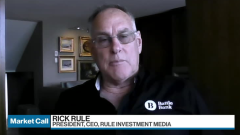May 19, 2024
Banks Warn of Growing Energy-Related Risks in Mortgage Portfolios
, Bloomberg News

(Bloomberg) -- Across Europe, banks are trying to figure out how to handle a growing risk lurking in residential mortgage portfolios: energy consumption.
In Germany, the bloc’s largest economy, it’s increasingly clear that many households are either unwilling or unable to devote funds to upgrading the energy efficiency of their homes. The German Bundesbank has already warned that failure to act may leave a substantial dent in property values, with knock-on effects for the wider economy. Deutsche Bank AG, meanwhile, says only a tiny fraction of its residential customers are currently eligible for green loans.
“All banks are facing the same challenges,” said Tobias Horn, head of portfolio management for private banking in the Frankfurt-based bank’s risk department.
Deutsche Bank, which has a residential real estate portfolio of about €175 billion ($190 billion), estimates that an individual home may need more than €100,000 worth of renovations to comply with the European Union’s highest energy performance level. That’s equivalent to €80 billion in aggregate for the bank’s residential real estate customers.
Such costs would come on top of regular mortgage payments and make servicing debt less affordable for homeowners. Deutsche Bank said in its latest annual report that the “largest concentration of credit risk within loans from a regional perspective is in its home market Germany, with a significant share in households, which includes the majority of the mortgage lending and home loan business.”
The big picture across Europe is that “there isn’t enough money” to bring the housing stock in line with the bloc’s targeted environmental standards, said Carsten Brzeski, chief economist for ING Germany. “You can’t force homeowners to do renovations.”
To help it meet the moment, Germany’s biggest bank is turning to structured capital-relief instruments. On Friday, Deutsche unveiled a deal with the European Investment Bank that allows it to grant discounts on more than €600 million of green mortgages in its home market. EIB will guarantee a €150 million mezzanine tranche in a consumer-loan securitization, unlocking lower capital requirements for the German lender.
It’s an arrangement that “will enable thousands of households in Germany to construct green homes or improve the climate footprint of existing houses,” said EIB Vice President Nicola Beer, who’s responsible for operations in Germany.
Deutsche Bank says it’s already looking into doing more such capital-relief deals, which have emerged as a piece of financial engineering that looks set to play an increasingly important role in Europe.
Banks in Europe are having to acknowledge that their residential real estate portfolios are laced with risks that green housing requirements are bringing to the fore.
In the Netherlands, the central bank has warned that credit-constrained borrowers who choose not to make their homes carbon neutral face a decline in the collateral value. At the same time, borrowers stretching available finances to cover such costs risk making themselves “more vulnerable to negative shocks,” the central bank said. “In both cases, the risk of the loan increases.”
In the UK, Lloyds Banking Group Plc, which has more than £300 billion ($380 billion) of mortgages on its books, says Britain has “the oldest and draftiest” housing stock in Europe. Yet almost half the country’s homeowners are put off by the high initial costs tied to making houses more energy efficient.
Rebecca Heaton, director of environmental sustainability at Lloyds, says the bank is “concerned by the inadequate progress in decarbonizing the UK’s 28 million homes.”
In Italy, meanwhile, a plan to green the housing stock got mired in scandal after tax breaks for energy-friendly renovations resulted in large-scale fraudulent investments. The framework has since been partially reversed and rules for tax credits revised.
The upshot is that Europe’s banks remain saddled with residential property assets that aren’t living up to environmental regulatory requirements.
Earlier this year, EU lawmakers passed the Energy Performance of Buildings Directive. The rollout of the new law will be gradual — lasting more than a decade — but property owners that fall too far behind risk being saddled with assets that can no longer be sold or rented. The EU estimates that about 85% of buildings in the bloc were built before 2000, with 75% of these having a “poor energy performance.”
The EU has set a goal of cutting emissions in the building sector by 60% by 2030, and has made complete decarbonization a 2050 target. At 42% of energy consumed, buildings “are the single largest energy consumer in Europe,” according to the European Commission.
Deutsche Bank says that despite the challenges, it expects that current investments in infrastructure, green power supply and green building materials “will achieve progress towards net zero” in the German real estate sector.
But in Germany alone, more than 60% of homes would need to undergo green renovations over the next decade to meet the EU’s stricter energy requirements. That process will cost somewhere between €740 billion and €1 trillion, according to estimates provided by ING Groep NV.
Horn says Deutsche only has energy performance certificate ratings for about 4% of residential real estate customers, which significantly limits its ability to issue green mortgages. What’s more, when a homeowner pays off the final installment of, say, a 30-year mortgage associated with a high-emissions home, that loan is wiped off the bank’s books, giving the impression that the home’s emissions have disappeared.
In fact, “it doesn’t change anything for the stock of buildings in German society” and creates “a deceptive image” about emissions reductions, Horn said.
Deutsche Bank estimates that one-third of its private real estate clients currently don’t have the financial means to retrofit their homes to the highest energy rating or zero carbon-ready building. Ultimately, that poses a threat to Germany’s goal of becoming net zero by 2045.
Deutsche Bank does what it can, Horn says. But “if the client doesn’t want to engage on energy efficiency or lacks the financial means, banks can’t make them.”
--With assistance from Steven Arons.
(Adds EIB comment in eighth paragraph.)
©2024 Bloomberg L.P.






